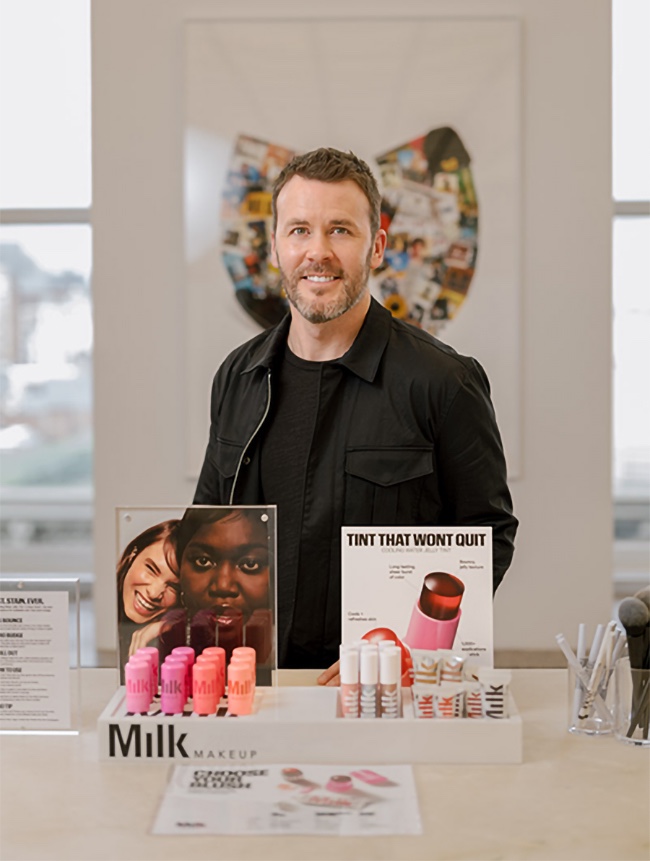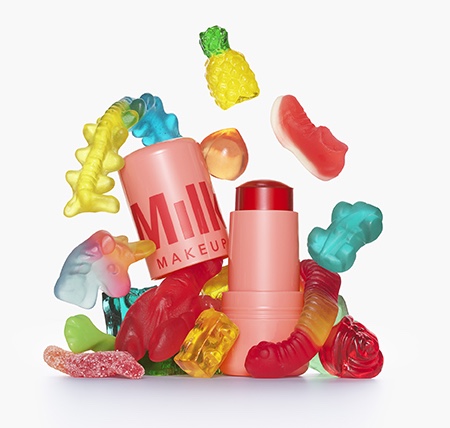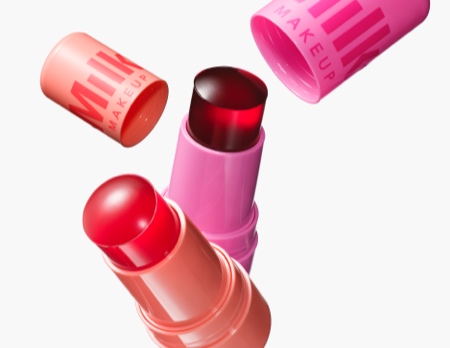Beauty brand builder

Tim Coolican “Stumbled Into” the cosmetics industry, working on Unilever’s DermaSilk hair-care brand as an intern. After graduating, he held a number of roles at Unilever before joining L’Oréal Canada in 2004. Coolican had several international positions — spanning Paris, Singapore, London and New York — and was named president of L’Oréal Paris USA in 2017.
After three years at the helm of the cosmetics giant, Coolican joined startup Milk Makeup, a New York City-based cosmetics and skin-care company, as CEO. Here, he talks to Smith Magazine contributor Rebecca Harris about how he got started on his globe-trotting career path, how social media has changed the makeup biz, what’s hot in cosmetics and what’s next for Milk.
Rebecca Harris: What brought you to Smith, and how did you land on your chosen career path?
Tim Coolican: The short story about why I chose Smith is I’d been told it was the best school. I wanted to be in a place where I would have hopefully the most opportunities possible coming out of school. I didn’t have any specific job in mind, but I knew that I wanted to have an international career, and I knew I wanted it to be in the marketing or advertising space. My first job was an internship in the beauty division at Unilever as a third-year student at Smith . . . They gave me the opportunity to come back full time but also to take six months [before I started] to go backpacking, which had always been a dream of mine.
What drew you to the cosmetics industry?
It happened because of opportunities I was given at Unilever, [where I had various roles] in the beauty and personal-care divisions. When I was in Montreal, I was recruited by L’Oréal. So it was a category that I had always been involved in. I was interested in the beauty category because it has a really involved group of customers. They care a lot about the products and care a lot about beauty in general. And so, it was always a fascinating, dynamic place to be with lots of innovation and an engaged community of people.
Why did you decide to work at a newer, smaller brand after working for an industry giant like L’Oréal?
I was fascinated by the opportunity to learn from a brand that was at a much earlier stage of development, where every action you take as a part of that team can be an important part to how successful the brand is long term. When you’re working on a big legacy brand, you’re writing pages in a book, and when you’re working on a smaller brand, you have the opportunity to write chapters.

I believe very deeply in what Milk Makeup stands for, and I wanted to be part of helping it grow. The reason the brand was created and exists today is to promote a positive vision of beauty that is about challenging historical beauty standards and promoting self-expression, community and diversity and inclusion. I wanted to be part of that. And I love the products — they’re innovative, high-performance and clean. The people behind the brand were incredibly inspiring, and I thought I could learn a lot from them.
What is your marketing approach for Milk Makeup?
Everything that we do is about serving our community and helping them to “live their look,” which is the brand’s signature. There was an early mantra internally, which was “It’s not how you wear your makeup that matters, it’s what you do in it.” And so, our approach is to try to help our community to live their look and to be of service through the products. We want our products to be unlike anything else in the market — fundamentally new and different, hardworking and clean, vegan and cruelty-free. We don’t really do traditional marketing. Everything we do is about connecting with our community and celebrating our community.
Is there a specific target demographic for Milk Makeup?
We don’t have a stated targeted demographic. It’s more about an ethos. The community that we want to connect with shares our values around the importance of self-expression and inclusion and diversity. It’s also a community that loves to try new things, and they aren’t afraid to experiment with new things and come up with their own ways of using them. We talk about our products as being tools for expression. We develop products with our community in mind, but we also welcome the community to use them the way that they feel is best.
How has social media changed the cosmetics industry?
It has completely changed the cosmetics industry. Before social media, [marketing] was a one-way communication: the brand developed a message and put it out through television, print, radio or outdoor [advertising]. But there was no opportunity for the community to ask questions, to provide feedback in a public forum and to share information, knowledge and tips and tricks.

Social media has become the most important way that brands connect with people and that people connect with brands. Because of social media, you can go as deep as you want in terms of exploring a brand and its products. It allows people to make a conscientious choice about which brands and products they want to use, and it allows them to be much more informed about the products, both in terms of how they’re formulated and how to use them.
What are some of the big trends in the cosmetics sector today?
From a product standpoint, people are enjoying playing with colour again. During the pandemic, beauty was driven by selfcare and so categories like skin care and hair care did very well. On some level, cosmetics has always been a more socially- driven category. When you’re able to travel and go out with people, you tend to use more makeup. Coming out of the pandemic, we’ve seen excitement return to playing with colour and experimenting with self-expression. Cosmetics has had a strong return to growth, and the category is well above where it was going into the pandemic. You can see that people are excited about makeup because the category itself has returned to a very healthy [position].
Where do you see Milk in five years? What’s the goal?
The way I look at it, the potential for Milk is limitless. The focus of the company has always been and will continue to be on its community: finding ways to connect, celebrate, amplify and serve that community — and increasingly now on a global scale. In 2019, the brand was only in four markets internationally, and today we’re in over 20. Over the next five years, we’ll continue to become more of a global brand.
